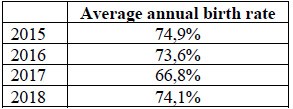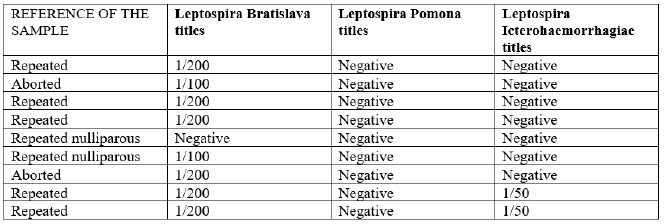Rodríguez, I.1; Portero, M.1; Jiménez, M.2; Menjón, R.2; Marcos, M.2
1 Campojerez Sl. Jerez de los Caballeros; 2 MSD Animal Health
irenerodriguezhaya@gmail.com; marcial.marcos@merck.com
INTRODUCTION
Porcine leptospirosis is an insidious disease that affects, among other species, pigs. Due to the economic losses that it produces and its zoonosis character, it must be considered in health programs. This pathology presents an acute form, which can affect growing pigs in the first weeks or months of their life causing high fever, jaundice, haemoglobinuria, convulsions and even in severe cases death of the animals. In contrast, another much more common form appears, the chronic or endemic form, which affects reproductive animals causing infertility, returns to heat, vulvar discharge, abortions, birth of weak piglets, stillbirths and litter scatter.
A very important epidemiological characteristic of the pathogen is its natural nidality, which result in practice in the existence of adapted and accidental serovars. An adapted serovar is which has a specific species as maintenance host, in which it is perpetuated without the intervention of other animal species; in the case of pigs in Spain, the adapted Leptospira serovars are Bratislava (characterized by its persistence in the genital apparatus of both, sows and boars) and Pomona. On the other hand, accidental serovars (mainly Icterohaemorrhagiae in our swine herd), for which pigs are accidental hosts, appears after contact with their corresponding maintenance hosts (normally wildlife species and especially rodents).
MATERIALS AND METHODS
Farm´s description
Farm of 450 Iberian breeding sows, which acts as a replacement nucleus for other farms, and where for several years it had been detecting a clinical symptomatology compatible with leptospirosis. The farm is managed in weekly bands with post-cervical AI and sanitarily is negative to PRRSV. The piglets are vaccinated before weaning with a bivalent vaccine against Porcine Circovirus type 2 and Mycoplasma hyopneumoniae, which makes these two agents are under control.
The problem
The clinical symptoms found were basically based on a very low fertility to ultrasound rate, that resulted in a birth rate below the production objectives (TABLE 1). In addition, this infertility was more evident in gilts, that were introduced to the farm for its first service. Sporadic losses were also observed at the end of the gestation period (sows that were positive to the ultrasound diagnosis arrived empty to the maternity area)
TABLE 1

Laboratory diagnosis
At the end of 2017, an exhaustive diagnosis was made looking for the cause of these reproductive problems, discarding several viral agents (Influenza, PRRS) and bacterial (Chlamydia, Brucella). Blood samples were sent from problematic sows (affected by infertility and / or abortions) to a Spanish reference laboratory for the diagnosis of leptospirosis (MAT technique, Microagglutination). The results clearly indicate the possible involvement of Leptospira and more specifically the Bratislava serovar, which has been associated in several studies to infertility problems (TABLE 2).
TABLE 2

Measures applied
Due to the clinical and laboratory diagnosis, it was decided on several occasions the application of medications (Tetracyclines) in the feed of the breeding sows, with the consequent slight improvement of the results, but not reaching an acceptable situation. Because of the apparent improvement of the results with the medication in feed, was decided to use individualized injectables treatments with streptomycin (25mg / Kg PV), but once again it was detected improvement without reaching the desired standard, as well as the feeling that the withdrawal of all this medication results in a resurgence of the problem.
Due to the therapeutic gap existing at that time for the control of the disease, decides to import a vaccine marketed outside the European Union, that included also antigens for the control of Parvovirus and Porcine Erysipela. The results in this case were not satisfactory and the imported vaccine was discontinued. Finally, at the end of 2018, thanks to the commercialization of a new multivalent vaccine that includes antigens against several serovars of Leptospira, Parvovirus and Porcine Erysipela, was implemented a vaccination program of all the sows in the farm, with two doses separated four weeks.
RESULTS AND DISCUSSION
The results of the antibiotic treatment in feed are shown in the following table:
TABLE 3 (a, b, different superscript indicates statistically significant difference)

For the study of the efficacy in the control of the disease using antibiotics, the period has been considered in which the feed was medicated in comparison with the periods in which no antimicrobial was used. High significant differences were detected among the groups. The percentage of fertility was significantly higher in WITH Antibiotics compared with NO Antibiotics (p = 0.005).
The results of the establishment of the new vaccination program are shown in the following table:

TABLE 4 (c, d, different superscript indicates statistically significant difference)
For the study of efficacy in the control of the disease by the new vaccine program, it was defined 3 periods: Before (referring to the twelve weeks prior to the application of the first vaccine dose), During (referring to the period between the first dose of vaccine in November of 2018 and two weeks after the second dose of vaccine, time necessary to generate immunity), and Vaccinated (referring to the six weeks after and until this article is written). Highly significant differences between the groups (p = 0.007) were detected. The percentage of fertility was significantly higher after the establishment of the vaccination process with respect to Before (p = 0.006).
It is necessary to open the discussion about the control of this disease, first by the difficulty that often involves exposing the causal agent, because many of the symptoms it produces are common to other pathogens, in addition to the difficulty of interpretation of diagnostic tests. And, secondly, assess the use of antimicrobials as a tool for control either in isolation or in combination with the new vaccine recently appeared in the market. We must emphasize that in this case there is a temporal coincidence between the vaccination process and the antimicrobial treatment, but that the stop in the treatment has not meant a worsening of the reproductive data
CONCLUSIONS
In view of the results, the possibility of disease control becomes evident by two very different approaches: prevention and treatment. In this specific case, vaccination has proven to be more effective, being also a useful tool for reduce the use of antibiotic treatments.
BIBLIOGRAPHIC REFERENCES
– “Diseases of Swine”, 10th Edition. Zimmerman.
– “Leptospirosis”. Manual Terrestre de la OIE 2014
– “Leptospira and Leptospirosis, Current Topics in Microbiology and Inmunology”. Adler, B. 2015
– “A novel octavalent combined Erysipelas, Parvo and Leptospira vaccine provides (cross) protection against infection following challenge of pigs with 9 different Leptospira interrogans serovars”. Jacobs et al. PHM, 2014
– “Safety and efficacy of a new octavalent combines Erysipelas, Parvo and Leptospira vaccine in gilts against Leptospira interrogans serovar Pomona associated disease and foetal death”. Jacobs et al. Vaccine, 2015.

